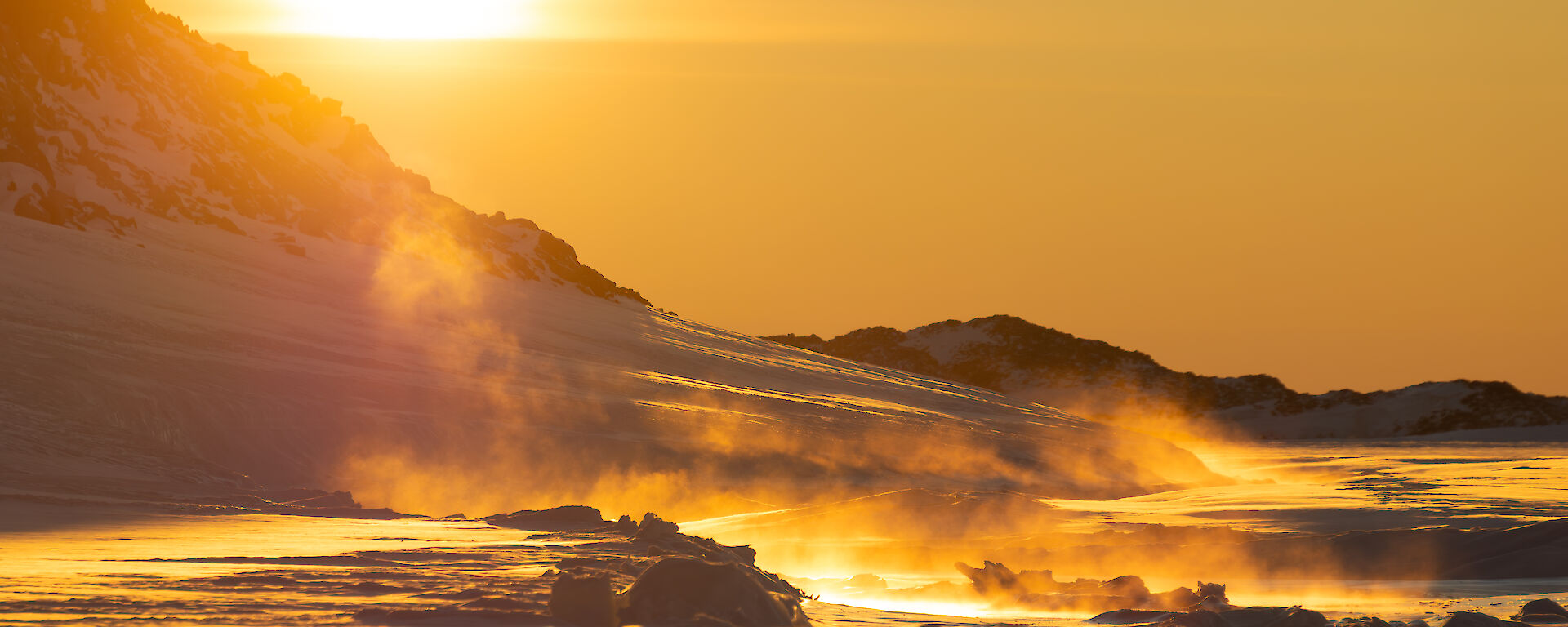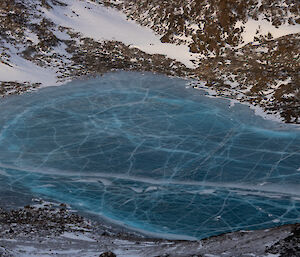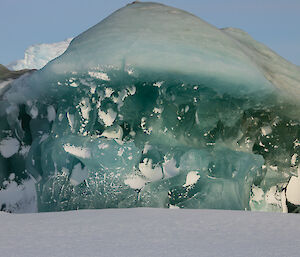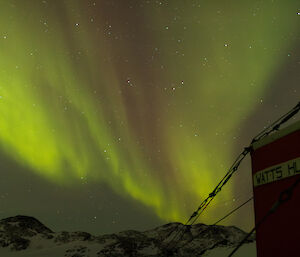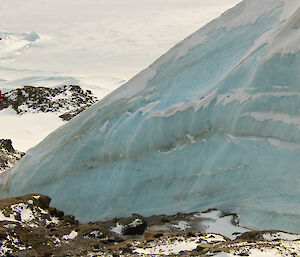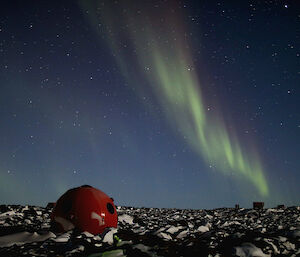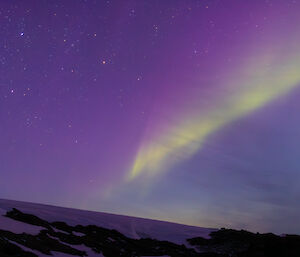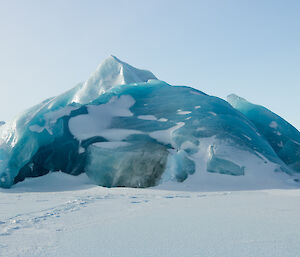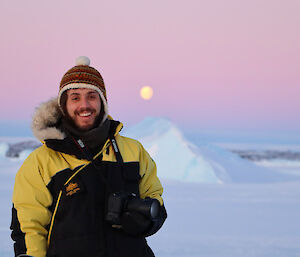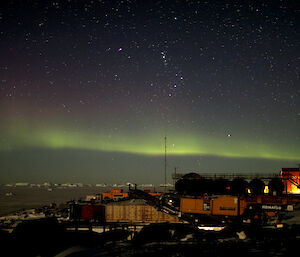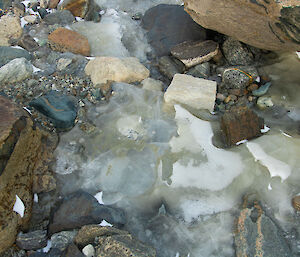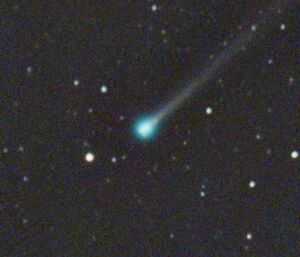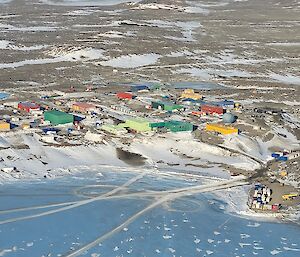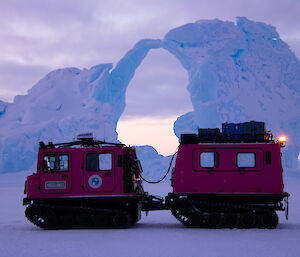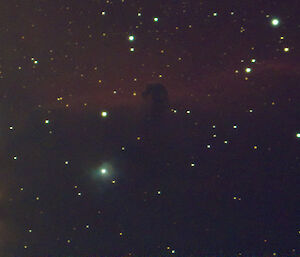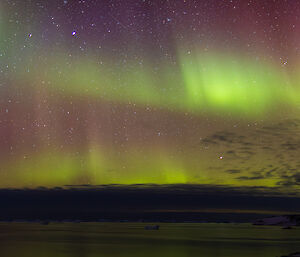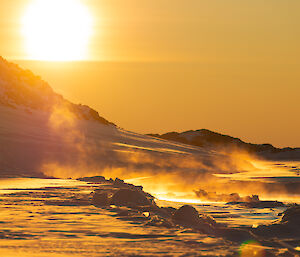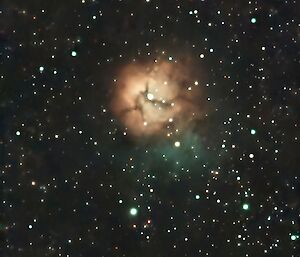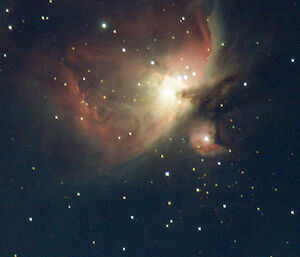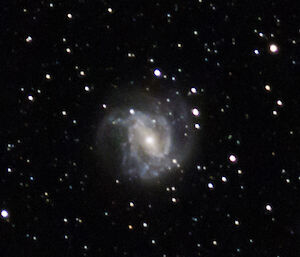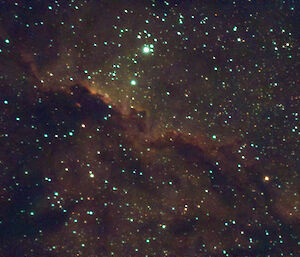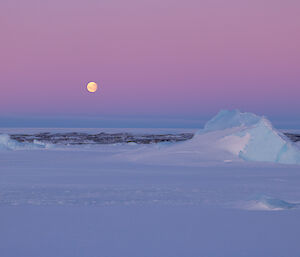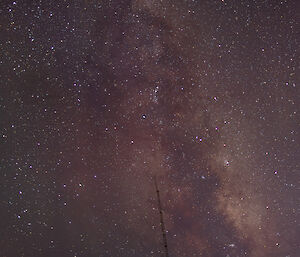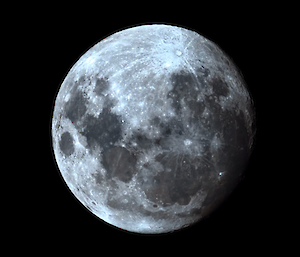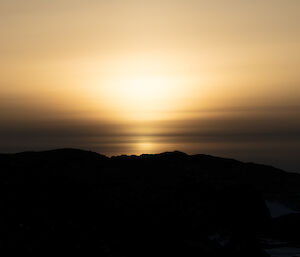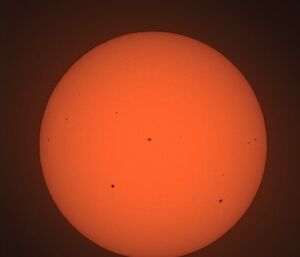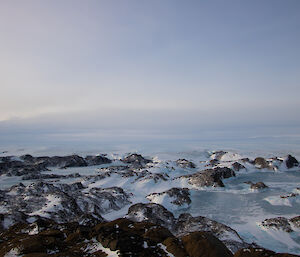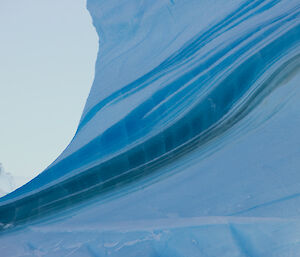Any colour you like
Home of the blizzard. Land of ice and snow. The great frozen continent. The endless polar night. When people speak of Antarctica like this, it conjures up images of a dark, colourless and dreary place. The Vestfold Hills – an Antarctic oasis – with its mighty fjords and fields of rubble, mostly paints a grey, rocky ancient landscape that feels closer to the Moon or Mars. If it were not for the Crayola-coloured Legoland that is Davis Station. However – amongst this rugged landscape, its own colour emerges.
Colour though does not actually exist. Electromagnetic energy is everywhere in our universe. It does not, by its nature, have colour. But we perceive a small part of this spectrum as light and attach this property of colour to it. A miracle of our amazing eyes and brains. As light travels through our lenses and hits the back of our retina, three specialised types of photoreceptors (four in some lucky people), are attuned to certain wavelengths and become excited when they pass through. This triggers a series of electrochemical reactions that then travel to the brain's visual cortex. Your brain, through a complex network of neurones, creates the perception of millions of colours. Except if you have only two functioning photoreceptors or are ‘colour-blind’ – an inaccurate term as the brain miraculously still perceives tens of thousands of colours from this.
As you walk through the Vestfold Hills, the ancient rocks give away their mineral secrets with traces of red, green, blue and gold littering the landscape. Each chemical absorbs and reflects different wavelengths of light that are as individual as your fingerprints. None are more special to Antarctica than the shades that the ice may come in. Crystal clear lakes, with their striking patterns, reveal a long journey, from snow to plateau to freshwater melt before rejoining the ocean. From the peaks of the Vestfolds, these bold blue fingers, full of cobblestone cracks, break up the weathered fjord landscape, as it abuts the plateau and the crevassed Sorsdal Glacier. Against wind-scoured ice cliff edges, we see a millennia of volcanic and geological activity stratified between layers of aquamarine ice.
Out on the sea ice, amongst the icebergs of all wonderful and odd shapes, the most majestic is the jade iceberg with its kaleidoscope of deep teals, emerald and cyan. Its green chemical fingerprint reveals its origin from iron-rich seawater that has frozen to the underside of an iceshelf. Against the afternoon sun, these magical icebergs almost fluoresce, as a wonderful peach blush comes off the distant plateau. As the season shifts to winter and the golden hour lasts forever, this dark and dreary place becomes a land of hearty pastels. It is often joined by the never-setting full Moon that makes the snow covered landscape glow.
However, the night slowly wins, and our once vibrant landscape cedes to the darkness of polar winter. But the night offers its own palette for those wanting to indulge. With the Sun at its solar maximum this year, giant magnetic storms on its surface ('sunspots'), regularly release huge amounts of charged particles. The solar winds carry these charged particles that batter our atmosphere daily. The resulting chemical reactions produce light, with a unique wavelength fingerprint, depending on the energy of the reaction, the altitude and the gas involved. Brilliant greens and reds from oxygen, with blues and purples for nitrogen (and occasionally helium and hydrogen)...the aurora australis.
Usually, a silvery shadow dancing across the night, the increased solar activity this year has spoilt us with spectacularly colourful and dynamic auroras. But despite the miracle of our eyes, we cannot quite capture all the majesty of the night sky. Thus, we invented the digital camera. We made a retina – image sensors – with three ‘photoreceptors’ – red, blue and green. And we made a brain – a microprocessor – that can turn the light hitting the sensor into amazing photos of our universe. Thus, faint silver and green shadow turn into an incredibly vibrant tapestry.
Hidden beyond the radiant curtains in our upper atmosphere, are deeper secrets of the universe. Without the light pollution of civilisation, and with its highly stable atmosphere, Antarctica has the clearest skies in the world for astronomy. By taking a digital camera and connecting it to a telescope, layer upon layer of carefully guided photos are stacked together to eek out the mysteries of space. Brilliant galaxies, variegated star clusters and radiant nebulas appear out of the darkness of the polar night. Their chemical fingerprint, through the colours we see, tell us about their cosmic story.
With the sun returning and starting its charge towards summer, the night sky once again hides its secrets. But we are lucky for it to have revealed them to us for this fleeting time we have had here. We now prepare to greet the return of wildlife, while our eyes turn to the horizon for the next splash of colour – the orange silhouette of the Nuyina. While a year on expedition may feel like forever, our presence here is only a glimpse of what this ancient continent has seen. Though, this experience will stay with us for our entire lives.
Full of vibrant, colourful memories amongst the magnificent desolation of the Vestfold Hills.
-
Dr. Anthony Rengel
Antarctic Medical Practitioner, Davis Station 78th ANARE 2024-2025
Photos captured using Canon 750D. Tamron 18-400m telephoto used for landscape, Canon 23mm f/1.4 for night photography. Astrophotography captured using ZWO Seestar S50 and edited with Siril & Adobe Lightroom.

